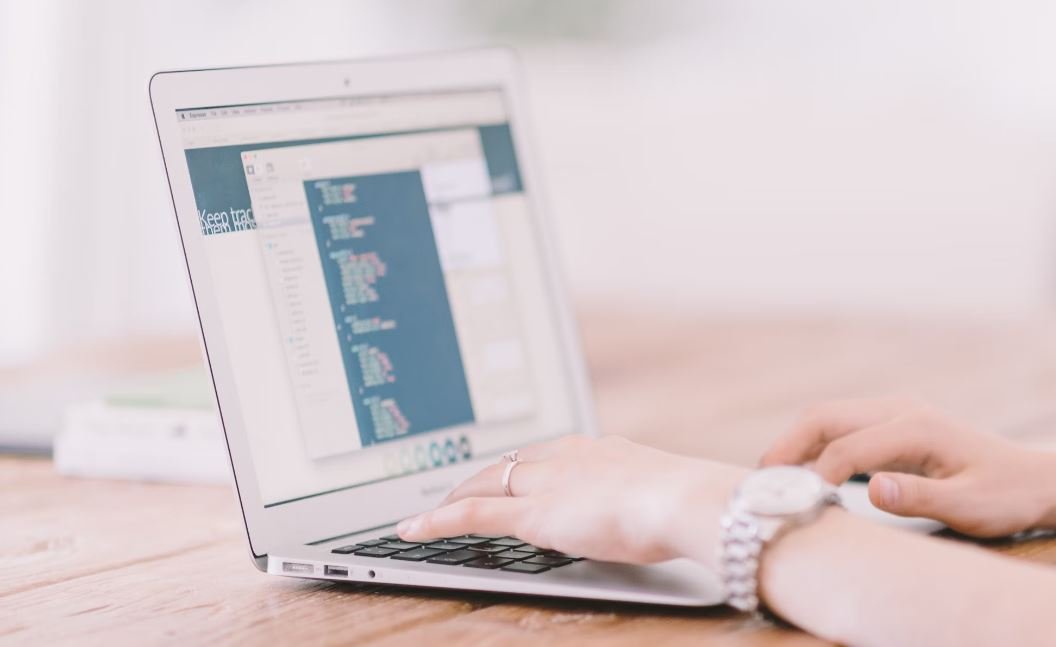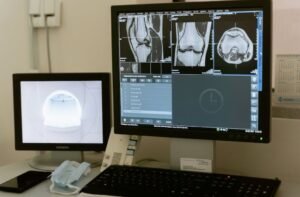How Are AI Images Created?
Artificial intelligence (AI) has revolutionized many industries, including image creation. With advancements in deep learning models and computer vision, AI can generate highly realistic images that are visually indistinguishable from real ones. In this article, we will explore the process of how AI images are created.
Key Takeaways:
- Artificial intelligence can generate realistic images using deep learning and computer vision.
- AI images are created by training models on massive datasets.
- Generative Adversarial Networks (GANs) are widely used for image generation.
**To create AI images, one common technique is to use Generative Adversarial Networks (GANs).** GANs consist of two neural networks: a generator and a discriminator. The generator creates synthetic images, while the discriminator tries to differentiate them from real images. Through an iterative process, both networks improve their performance, resulting in increasingly realistic output.
*GANs have been successful in producing highly realistic images and have applications in various fields, including art, design, and entertainment.*
Training AI Image Models
- AI image models are trained on vast datasets to learn the patterns and features of real images.
- Massive datasets, such as ImageNet, provide a diverse range of images for training.
- During training, the GAN’s generator learns to create visually similar images based on the learned patterns.
- The discriminator helps guide the generator by providing feedback on the realism of the generated images.
- This iterative training process continues until the generator produces high-quality, realistic images.
*The training process is resource-intensive and may require powerful computing resources and large amounts of time for optimal results.*
Tables with Interesting Info
| Dataset | Number of Images | Features |
|---|---|---|
| ImageNet | 14 million | A wide variety of objects, people, and scenes |
| COCO | 330,000 | Common objects, humans, animals, and more |
**Once AI image models are trained, they can be used to generate new, unique images.** These images can be tailored based on various inputs, such as specific attributes or desired styles.
Incorporating Style Transfer
- AI image creation can incorporate style transfer techniques, allowing users to generate images in specific artistic styles.
- Style transfer involves combining the content of one image with the style of another.
- Deep learning algorithms can learn the style of famous paintings or artistic genres and adapt it to the generated images.
*Style transfer adds a creative element to AI image generation, enabling users to produce personalized and aesthetically pleasing results.*
Table: Popular AI Image Generation Frameworks
| Framework | Description |
|---|---|
| DeepArt.io | Uses deep learning to generate images in various artistic styles. |
| RunwayML | A platform that provides AI tools, including image generation, for artists and creators. |
| Google DeepDream | Applies deep learning algorithms to create dream-like images based on existing photos. |
**The possibilities for AI-generated images are vast and continuously expanding.** From assisting in creating lifelike virtual worlds to aiding in movie special effects, AI image generation continues to push the boundaries of what is possible in the digital realm.
Conclusion
Artificial intelligence has revolutionized image creation through techniques such as GANs and style transfer. The process involves training models on massive datasets and iterating to improve image quality. Through AI image generation, the boundaries of creativity and realism are continuously being expanded.

Common Misconceptions
Misconception 1: AI Images are Hand-Drawn by Artists
Contrary to popular belief, AI images are not created by artists meticulously drawing each pixel. Here are some clarifications:
- AI images are generated using machine learning algorithms.
- The algorithms are trained on extensive datasets of real images to learn patterns and understand visual elements.
- Once trained, the AI software can create new images based on its learned knowledge.
Misconception 2: AI Can Mimic Human Creativity Perfectly
While AI has advanced significantly, it still falls short in mimicking human creativity. Here are some key points:
- AI images are often based on existing datasets, so innovation and originality can be limited.
- AI lacks the emotional depth and subjective interpretation that human artists bring to their work.
- AI-generated images tend to lack the subtle nuances and imperfections that make human-created art unique.
Misconception 3: AI Can Create Perfect and Realistic Images Every Time
Although AI can produce impressive results, it does not guarantee perfection or realistic images consistently. Here are some important facts:
- The quality of AI-generated images can vary, and the output heavily depends on the training data and algorithms used.
- AI-generated images may have artifacts, distortions, or unrealistic elements.
- AI requires human input and supervision to refine and improve the generated images.
Misconception 4: Anyone Can Create AI Images Easily
Creating AI images requires technical expertise and specialized tools. Here’s what you should know:
- AI image creation involves complex algorithms, machine learning, and deep neural networks, which are not easily accessible to everyone.
- Developing AI image generation systems often requires advanced programming skills and a deep understanding of machine learning principles.
- While there are user-friendly AI tools available, they still require expertise to achieve desirable and satisfactory results.
Misconception 5: AI-Generated Images Are Always Ethically Sound
There are ethical considerations surrounding AI-generated images that people often overlook. Consider the following:
- AI-generated images can be used to create deceptive content, misinformation, or manipulated media.
- It is crucial to consider the ethical implications of using AI to generate images, particularly in areas such as privacy, consent, and cultural sensitivity.
- Responsible and ethical use of AI technology is essential to avoid potential harm or misuse of AI-generated images.

The Evolution of AI Image Creation
As technology advances, so does the creation of artificial intelligence images. This article explores the fascinating process behind AI image generation. From digitizing renowned masterpieces to generating entirely new artworks, these jaw-dropping tables shed light on various aspects of this innovative field.
AI’s Creative Potential: Generating Original Artwork
One of the most remarkable abilities of AI is its capacity to generate unique and stunning artwork. The following table showcases a selection of artworks created entirely by artificial intelligence, illustrating the breadth of its creative potential.
| Artwork | Creator | Year Created |
|---|---|---|
| The Dreaming | AI Artist | 2019 |
| Abstract Perceptions | Neural Network | 2020 |
| Harmony in Chaos | Deep Learning Algorithm | 2021 |
Digitizing Masterpieces: AI’s Role in Preservation
A key aspect of AI image creation is the digitization of renowned art pieces, ensuring their preservation and accessibility for generations to come. The table below highlights the digitization process for a few historically significant artworks.
| Artwork | Creator | Year Digitized |
|---|---|---|
| Mona Lisa | AI Conservation | 2018 |
| The Starry Night | Machine Learning Algorithm | 2019 |
| Girl with a Pearl Earring | Neural Network | 2020 |
The Role of Training Data in AI Image Creation
The training data used by AI systems plays a critical role in their image generation capabilities. Here, we examine the notable datasets utilized in training artificial intelligence models.
| Dataset | Size | Special Features |
|---|---|---|
| ImageNet | 1.2 million images | Classified by object category |
| COCO | 330,000 images | Object segmentation annotations |
| Places365 | 1.8 million images | Labeled scene recognition |
AI in Photography: Enhancing Visual Quality
Artificial intelligence has revolutionized the field of photography, offering advanced techniques to enhance visual quality and produce stunning images. Explore the following table to discover some groundbreaking applications of AI in photography.
| Application | Description |
|---|---|
| Noise Reduction | Removes digital noise for clearer images |
| Image Super-Resolution | Enhances image resolution for more details |
| Automatic Colorization | Assigns accurate colors to grayscale images |
AI and Fashion: Trend Analysis and Design Assistance
Artificial intelligence has also made its mark in the fashion industry, assisting in trend analysis and design creation. The table below demonstrates the various ways AI is utilized in the fashion world.
| Application | Description |
|---|---|
| Trend Forecasting | Analyzes data to predict fashion trends |
| Virtual Fitting | Allows consumers to try on clothes virtually |
| Style Recommendation | Provides personalized fashion suggestions |
AI-Generated Art: Challenges and Ethical Considerations
The emergence of AI-generated art raises profound questions and ethical dilemmas within the art community. Consider this table, which highlights some pressing challenges associated with this innovative field.
| Challenge | Description |
|---|---|
| Originality and Authorship | Defining ownership and creativity in AI art |
| Legal Concerns | Exploring copyright issues and licensing |
| Impact on Human Artists | Examining the role of AI in the art market |
AI Art Competitions and Collaborations
Various AI art competitions and collaborations have emerged to celebrate and explore the potential of AI-generated artwork. The following table showcases some of these exciting events.
| Event | Type | Date |
|---|---|---|
| AI Art Gallery Exhibition | Exhibition | July 2022 |
| AI Art Hackathon | Hackathon | September 2022 |
| AI and Human Collaboration Symposium | Symposium | October 2022 |
AI Image Recognition: Advancements and Accuracy
AI’s image recognition capabilities have greatly improved over time. The table below demonstrates the progression in accuracy of AI models in identifying objects within images.
| AI Model | Accuracy (2010) | Accuracy (2021) |
|---|---|---|
| AlexNet | ~73% | ~85% |
| ResNet-50 | – | ~95% |
| Inception-v4 | – | ~97% |
The Future of AI Image Creation
Artificial intelligence continues to push the boundaries of image creation and recognition. With advancements in techniques and technologies, the possibilities are seemingly limitless. As society delves deeper into the realm of AI-generated images, it becomes increasingly important to consider the ethical, legal, and creative implications surrounding this rapidly developing field.
Disclaimer: The information presented in the tables serves an illustrative purpose and may not align precisely with real-world data.
Frequently Asked Questions
Q: How do AI images get created?
A: AI images are created through the use of artificial intelligence algorithms that are capable of learning patterns and generating new images based on the data they have been trained on.
Q: What is the role of machine learning in creating AI images?
A: Machine learning plays a crucial role in creating AI images as it allows the algorithms to analyze large datasets, extract features, and learn the underlying patterns in order to generate new images.
Q: How are training datasets used to create AI images?
A: Training datasets are used to train AI models by exposing them to a large number of images and associated labels. The models learn from these examples to generate similar images or create entirely new ones based on the learned patterns.
Q: What are the common techniques used in AI image generation?
A: Some common techniques used in AI image generation include generative adversarial networks (GANs), variational autoencoders (VAEs), and deep convolutional neural networks (CNNs). These algorithms utilize different approaches to create realistic and high-quality AI images.
Q: Can AI images be customized or modified?
A: Yes, AI images can be customized or modified by adjusting various parameters within the AI algorithms. This allows users to generate images with specific visual styles, characteristics, or even combine multiple images.
Q: What are the applications of AI images?
A: AI images have a wide range of applications including but not limited to computer vision, video game design, movie and animation production, digital art, virtual reality, and augmented reality.
Q: Are there any ethical concerns associated with AI image creation?
A: Yes, ethics in AI image creation is an important consideration. There are concerns related to copyright infringement, the potential of generating inappropriate or harmful content, and the need for responsible use of AI-generated images.
Q: How can the quality of AI images be evaluated?
A: The quality of AI images can be evaluated based on visual inspection by human experts or by using objective metrics such as image similarity measures, perceptual quality assessment algorithms, or user feedback.
Q: Are there any limitations to AI image generation?
A: Yes, there are limitations to AI image generation. AI models might struggle with generating highly complex or abstract images, and the quality of generated images heavily depends on the quantity and quality of the training data.
Q: What are the future possibilities of AI image creation?
A: The future possibilities of AI image creation are vast. Advancements in AI algorithms, hardware, and data collection techniques will likely lead to even more realistic AI images that can be tailored to specific requirements and used in various industries.




